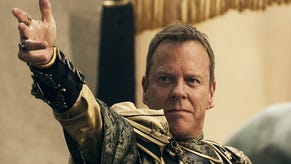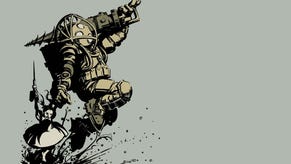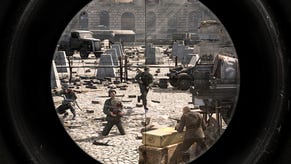Mortal Kombat
Shao we Kahn.
Equally impressive is the new Story Mode. The plot begins in a future where Shao Kahn has killed more or less everyone and is about to finish off his brother, but before the coup de grâce hits the mark, Raiden sends a message back through time. This is received by his past self at the start of the first Mortal Kombat, and as the timeline is gradually distorted by Raiden's intervention, the events of MK1 through to MK3 unfold in an alternate reality.
This means nothing is set in stone and everything – from the fate of the Lin Kuei, to who wins and who dies – is now entirely subject to change. It's a solid challenge that's worth seeing through to the end, yet despite taking around seven hours to finish, the bulk of the single-player can be found in the appropriately titled Challenge Tower.
This mountain of mayhem is made of 300 challenges that range from fighting an opponent who can only be damaged with throws to avoiding hellish hands that grab your character's feet. A number of challenges fall outside the normal fighting system and include one stage where you have to spam Stryker's Pistol special to slow down a horde of advancing zombies. There are even matches which make use of the new Tag-Team mode.
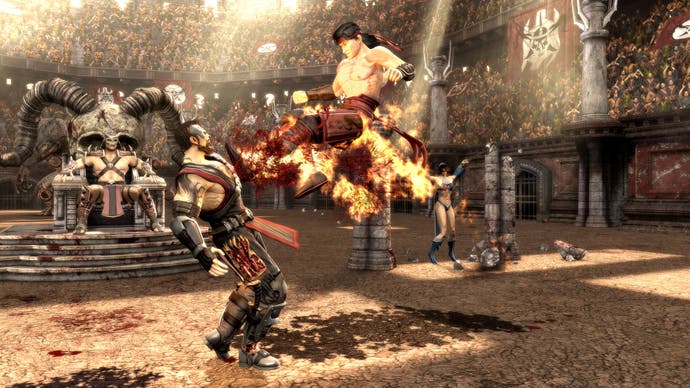
The fact that Mortal Kombat has never featured tag gameplay before is a little surprising, but looking at how it's been implemented here, it's clear where the inspiration stems from. Any two characters can be teamed together and you need to dispatch both opponents to secure a victory. Advanced mechanics come in the form of Swap Attacks and Assists which burn meter and function much as you'd expect. It's not the most elegant tag system you'll play this year, but as an additional mode that can be taken online, it's a credible first attempt.
The online environment that Mortal Kombat creates for Xbox Live isn't short of features. Players can test their might in Ranked, Player and Private Matches using the single and Tag-Team systems, as well as a new King of the Hill mode that caters for up to eight players. This works similarly to the Endless Battle mode from Street Fighter IV as two players fight for the right to be king while the rest watch. And as a quirky feature, the spectators can boo, cheer and rate the winner's performance with their Xbox Avatars from the bottom of the screen.
This can be turned off if you find it distracting, but if you can see the funny side of seven zeros after a double Flawless Victory, then it's a welcome addition. The online is topped off with Rooms that field up to 100 players. But if Mortal Kombat online has one weakness, it's noticeable lag. It's not game-breaking (and at the time of writing, I was mostly fighting players in the US), but it does make certain moves hard to punish. It also throws the timing of flashier combos, and as a result, you may come to rely on less demanding methods.
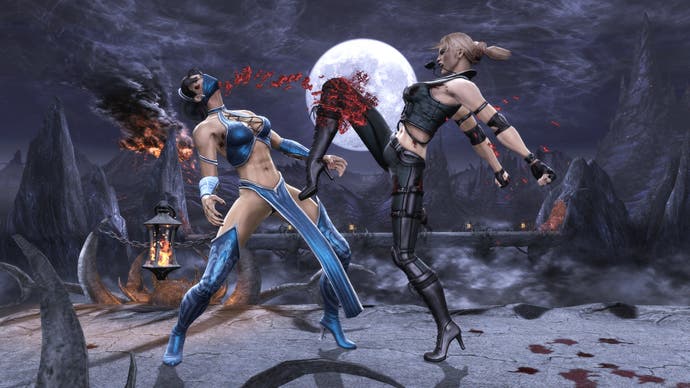
Evaluating the strengths and weaknesses of Mortal Kombat is a tricky business. On the one hand, if offers a single-player experience that's very comprehensive, but as a competitive fighting game, it falls short of the Japanese competition by a wide margin. The less restrictive combo system is a step in the right direction, but an overburdened super gauge doesn't pick this out as a future tournament favourite. And while it's also too early to be making calls on the character balancing, an abundance of easy-to-abuse specials is still cause for concern.
But to judge Mortal Kombat harshly simply because it isn’t the equal of BlazBlue or Street Fighter IV on a technical level would be unfair to what the game does right. The series has always ridden in the wake of its own spectacle, but after years of unfocused deviation, we finally have an evolution that demonstrates clear progress. It’s the best 3D game in the series by a long way, and that’s because it embraces the 2D heritage which always made Mortal Kombat its own kind of game. Long may it kontinue.


